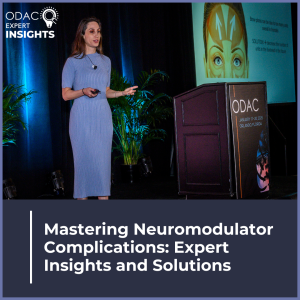
At the 2025 ODAC Dermatology Conference, Jacqueline Watchmaker, MD, shared how to assess and manage neuromodulator complications. Here are some highlights from her session:
- With heavy eyelids, Dr. Watchmaker says it’s crucial to determine whether the issue lies with the brow or the eyelid itself.
- Brow ptosis is caused by too many units overall in the frontalis, too many units too low or lateral in the frontalis, or diffusion of neuromodulator from the glabellar complex to the lower frontalis.
- Watchmaker suggests adding units to the depressor muscles (procerus/corrugators/orbicularis oculi) to help lift the brow. Also, with time, she says the neurotoxin’s effects will naturally fade, resolving the brow ptosis without intervention.
- A “crooked smile” effect can happen when inadvertently injecting the depressor labii inferioris (DLI) muscle. Injecting one unit of the neuromodulator into the contralateral DLI muscle will lessen the effect naturally in a few weeks.
- A “shelf” appearance under the eye occurs when too much neuromodulator is injected into the orbicularis oculi muscle. This may be prevented by using only 1-2 units for the most inferior injection.
- Patients also may notice more prominent “sleep lines” post-injection. She recommends patients wear hydrocolloid bandages at night if the lines are bothersome.
- Watchmaker also debunks several myths that are often shared with patients after neuromodulator injections, including not bending down or lying down for four hours post-injection, or not working out for 24 hours.
- Watchmaker says there is limited data regarding whether exercising facial muscles or taking oral zinc help prolong a neuromodulator’s duration.
This session summary was written by Vixey Silva, DO, and published on Next Steps in Derm.
Register for ODAC 2026 for more pearls on preventing and managing complications.
